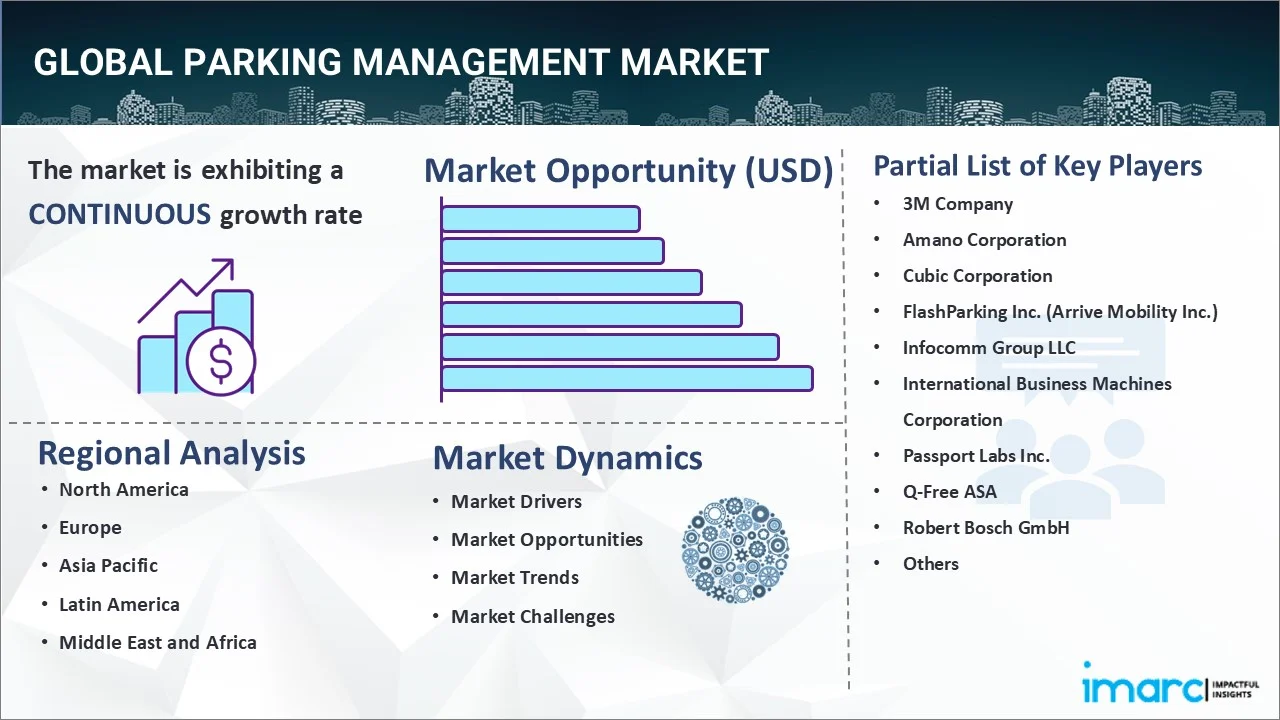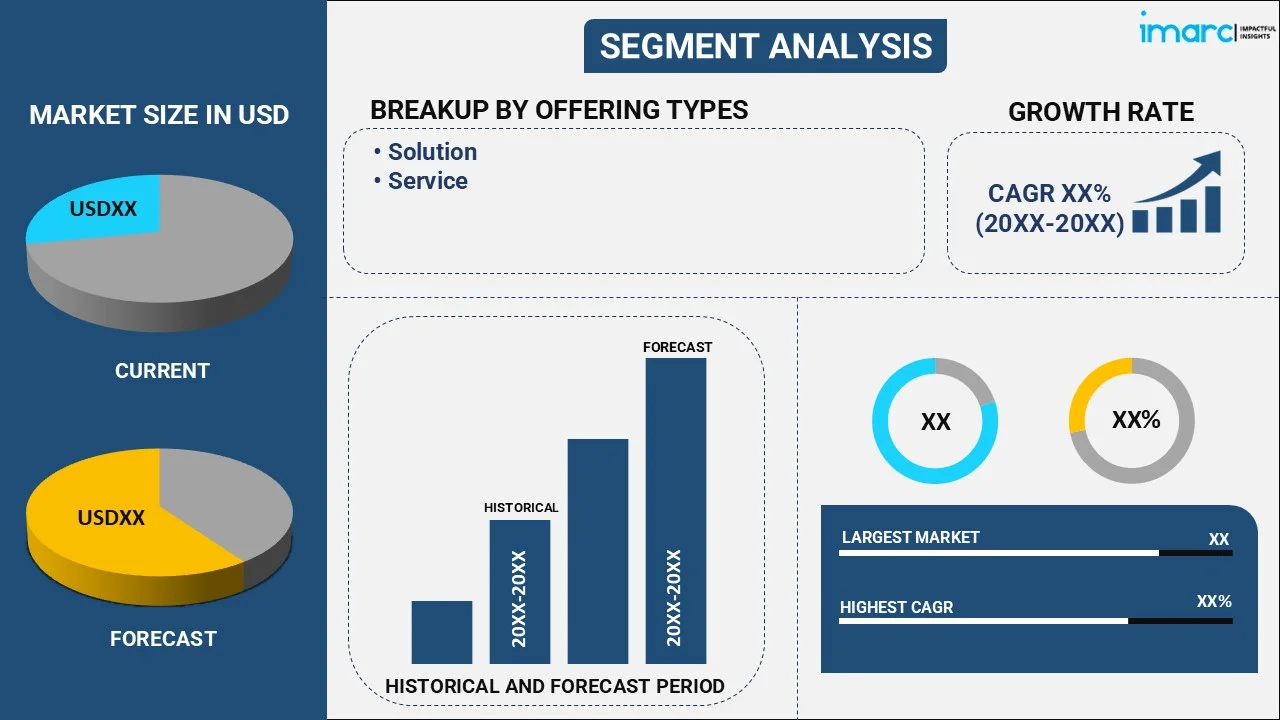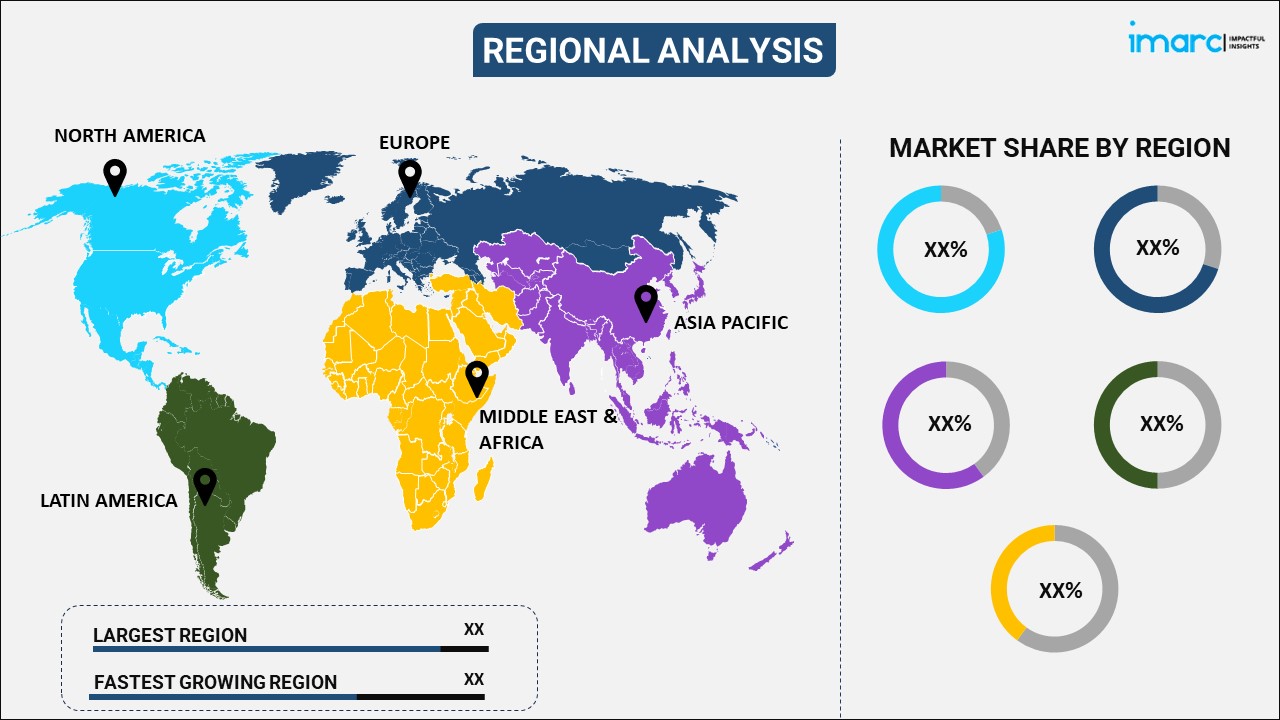
Parking Management Market Report by Offering Type (Solution, Service), Deployment Mode (On-Premises, Cloud-Based), Parking Site (Off-Street, On-Street), and Region 2025-2033
Parking Management Market Overview:
The global parking management market size reached USD 5.1 Billion in 2024. Looking forward, IMARC Group expects the market to reach USD 10.1 Billion by 2033, exhibiting a growth rate (CAGR) of 7.67% during 2025-2033. The market is growing because of different factors like rising sales of EVs, technological advancements continuously taking place to boost operational efficiency and enhance user experience, and the increasing number of smart cities that need advanced and efficient parking solutions.
|
Report Attribute
|
Key Statistics
|
|---|---|
|
Base Year
|
2024 |
|
Forecast Years
|
2025-2033
|
|
Historical Years
|
2019-2024
|
| Market Size in 2024 | USD 5.1 Billion |
| Market Forecast in 2033 | USD 10.1 Billion |
| Market Growth Rate (2025-2033) | 7.67% |
Parking Management Market Analysis:
- Major Market Drivers: There is gradual a rise in the sales of vehicles around the world. This, along with the consequent need for better traffic management solutions, is a significant market driver.
- Key Market Trends: The rapid development of smart cities in developing economies and innovations in parking management technologies are major trends of the industry.
- Geographical Trends: North America is an urbanized region with developed infrastructure and as a result, it holds the biggest market share.
- Competitive Landscape: The key players in the parking management industry include 3M Company, Amano Corporation, Cubic Corporation, FlashParking Inc. (Arrive Mobility Inc.), Infocomm Group LLC, International Business Machines Corporation, Passport Labs Inc., Q-Free ASA, Robert Bosch GmbH, SAP SE, Siemens AG, T2 Systems Inc. (Verra Mobility), among many others.
- Challenges and Opportunities: The market is facing hindrances in the form of privacy concerns. Nonetheless, it is also encountering opportunities as the industry investors are focusing on adapting contactless entry, payment, and exit.

Parking Management Market Trends:
Rising trend of smart cities
The IMARC Group’s report states that the global smart cities market reached US$ 1,233.7 Billion in 2023. Smart cities help enhance the quality of life of people by connecting transportation and parking. Parking management systems are used in smart cities as they offer up-to-date information on parking space and traffic patterns, aid in overcoming traffic jams and improving mobility in cities. Furthermore, smart cities heavily rely on data for planning and management. Parking management systems gather large volumes of information on traffic patterns, times of maximal parking demand, and usage rates. These statistics are used to make relevant decisions like determining where to add parking spaces or how to set prices to regulate demand.
Growing sales of EVs
There is presently a need for more EV charging stations in public and private parking because of the increasing number of people opting for EVs. Some parking management firms are including charging infrastructure in their designs and operations, and this involves enhancement of power supply and charging hardware, thereby increasing the parking management market revenue. In addition, to control the power demand that is required when several EVs are charging at once, smart charging solutions are being incorporated into the parking management systems. These systems can emphasis charging according to the demand, type of car and charge level and even change the rate of charging as per the grid demand for efficiency and cost-effectiveness. The IMARC Group’s report shows that the global electric vehicle market is expected to reach US$ 4,918.7 Billion by 2032.
Continuous advancements in technology
Internet of Things (IoT) technology makes it possible for parking sensors, cameras, and other related devices to be connected to the internet, which allows real time control and updating of parking spaces. Additionally, modern mobile applications enable users to discover, book and pay for parking spaces using their devices. The interfaces with global positioning systems (GPS) and real-time data make these apps provide directions to available areas and recommend other parking areas when full. Besides this, many key players are moving towards cloud-based platforms that offer scalable, flexible, and cost-effective parking management solutions. For example, Adaptive Recognition, which is a pioneer in License Plate Recognition (LPR) solutions, introduced Carmen Cloud ANPR, a groundbreaking solution designed to revolutionize parking management operations in the year 2023.
Parking Management Market Segmentation:
IMARC Group provides an analysis of the key trends in each segment of the market, along with forecasts at the global, regional, and country levels for 2025-2033. Our parking management industry report has categorized the market based on offering type, deployment mode and parking site.
Breakup by Offering Type:

- Solution
- Access Control
- Security and Surveillance
- Revenue Management
- Parking Reservation Management
- Valet Parking Management
- Others
- Service
- Consulting and Training
- System Integration and Deployment
- Support and Maintenance
Solution accounts for the majority of the market share
The report has provided a detailed breakup and analysis of the market based on the offering type. This includes solution (access control, security and surveillance, revenue management, parking reservation management, valet parking management, and others) and service (consulting and training, system integration and deployment, and support and maintenance). According to the report, solution represents the largest segment.
Parking management solution refers to a broad category of detailed service solutions and technologies aimed at enhancing the functionality and profitability of parking structures. This solution comprises parking guidance, reservation, payment, and access system developments that help to improve the experience of the users and the flow of business, thereby influencing the parking management market dynamics. The surge in urban populations and the growing demand for efficient parking systems are driving the expansion of advanced parking management systems. Additionally, these solutions are crucial for managing parking assets, preventing cluttered spaces, and addressing environmental concerns, making them essential for modern cities.
Breakup by Deployment Mode:
- On-premises
- Cloud-based
On-premises hold the largest share of the industry
A detailed breakup and analysis of the market based on the deployment mode have also been provided in the report. This includes on-premises and cloud-based. According to the report, on-premises account for the largest market share.
On-premises solutions help organizations with superior control over data and system security, a critical consideration for sectors like government and finance, where data sensitivity is of utmost importance. These systems enable organizations to manage their IT infrastructure internally and ensure that all data is limited to their private networks, avoiding transmission over the internet, and consequently minimizing exposure to cyber threats. Additionally, on-premises solutions are often preferred by entities that require high levels of customization and integration with existing systems, as they provide more flexibility compared to cloud-based solutions, thereby bolstering the parking management market growth.
Breakup by Parking Site:
- Off-street
- On-street
Off-street represents the leading market segment
The report has provided a detailed breakup and analysis of the market based on the parking site. This includes off-street and on-street. According to the report, off-street represents the largest segment.
Off-street parking facilities, such as garages and private lots, are strategically positioned near commercial, residential, or governmental buildings. These facilities help cities alleviate street congestion and enhance traffic flow by relocating parked vehicles away from public streets. Moreover, off-street parking supports the deployment of advanced technologies, including automated ticketing systems, security surveillance, and digital payment options, thereby boosting user convenience and operational efficiency. The controlled environment of off-street parking also means that it can offer safer parking options, which are less prone to theft, thus appealing more to vehicle owners and driving the parking management demand.
Breakup by Region:

- North America
- United States
- Canada
- Asia-Pacific
- China
- Japan
- India
- South Korea
- Australia
- Indonesia
- Others
- Europe
- Germany
- France
- United Kingdom
- Italy
- Spain
- Russia
- Others
- Latin America
- Brazil
- Mexico
- Others
- Middle East and Africa
North America leads the market, accounting for the largest parking management market share
The report has also provided a comprehensive analysis of all the major regional markets, which include North America (the United States and Canada); Asia Pacific (China, Japan, India, South Korea, Australia, Indonesia, and others); Europe (Germany, France, the United Kingdom, Italy, Spain, Russia, and others); Latin America (Brazil, Mexico, and others); and the Middle East and Africa. According to the report, North America represents the largest regional market for parking management.
An article on the website of the International Trade Administration (ITA) in 2023 mentioned that the Mexico automotive sector held 3.6% of the nation’s Gross Domestic Product (GDP) and18% of the manufacturing GDP. As automobile production and ownership is increasing in Mexico, the need for effective parking solutions is becoming necessary. In addition to this, North American cities are often early adopters of advanced technologies, including smart parking systems that integrate IoT devices, mobile applications, and real-time data analytics to enhance user experience and operational efficiency.
Competitive Landscape:
- The parking management market research report has also provided a comprehensive analysis of the competitive landscape in the market. Detailed profiles of all major companies have also been provided. Some of the major market players in the parking management industry include 3M Company, Amano Corporation, Cubic Corporation, FlashParking Inc. (Arrive Mobility Inc.), Infocomm Group LLC, International Business Machines Corporation, Passport Labs Inc., Q-Free ASA, Robert Bosch GmbH, SAP SE, Siemens AG, and T2 Systems Inc. (Verra Mobility).
(Please note that this is only a partial list of the key players, and the complete list is provided in the report.)
- Key players are integrating cutting-edge technologies like artificial intelligence (AI), machine learning (ML), and the Internet of Things (IoT) to elevate the functionality and efficiency of parking management systems. They are enhancing mobile applications that enable users to locate, reserve, and pay for parking spots remotely. Additionally, numerous companies are adopting advanced security measures, including surveillance systems, license plate recognition technology, and secure payment gateways, to bolster the safety and security of parking facilities. They are forming strategic partnerships with municipalities, technology providers, and other stakeholders to expand market reach and integrate with broader smart city initiatives. For instance, in 2023, the group Indigo, French world leader in parking and urban mobility solutions, strengthen its presence in the B2B segment by partnering with the parking operator BePark through the acquisition of a 60.2% majority stake. These initiatives by key market players are projected to influence the parking management industry forecast positively.
Parking Management Market News:
- February 6, 2024: SP Plus Corporation announced that it is now operating and managing five parking facilities with its Sphere™ technology platform at Miami Valley Hospital, in Dayton, Ohio. The implementation of Sphere Commerce Digital Ticket technology for Miami Valley Hospital features gated entry and exits, along with a completely digital experience – including QR code capability, and a digital ticket, eliminating the need for paper tickets.
- May 2, 2023: WPS Parking Solutions, specialists in innovative cloud-based parking management solutions, was acquired by Munich-based family-run industrial holding company CERTINA GROUP to further drive innovation and growth in parking management.
Parking Management Market Report Scope:
| Report Features | Details |
|---|---|
| Base Year of the Analysis | 2024 |
| Historical Period | 2019-2024 |
| Forecast Period | 2025-2033 |
| Units | Billion USD |
| Scope of the Report | Exploration of Historical Trends and Parking Management Market Outlook, Industry Catalysts and Challenges, Segment-Wise Historical and Future Market Assessment:
|
| Offering Types Covered |
|
| Deployment Modes Covered | On-Premises, Cloud-Based |
| Parking Sites Covered | Off-Street, On-Street |
| Regions Covered | North America, Asia Pacific, Europe, Latin America, Middle East and Africa |
| Countries Covered | United States, Canada, Germany, France, United Kingdom, Italy, Spain, Russia, China, Japan, India, South Korea, Australia, Indonesia, Brazil, Mexico |
| Companies Covered | 3M Company, Amano Corporation, Cubic Corporation, FlashParking Inc. (Arrive Mobility Inc.), Infocomm Group LLC, International Business Machines Corporation, Passport Labs Inc., Q-Free ASA, Robert Bosch GmbH, SAP SE, Siemens AG, T2 Systems Inc. (Verra Mobility), etc. |
| Customization Scope | 10% Free Customization |
| Post-Sale Analyst Support | 10-12 Weeks |
| Delivery Format | PDF and Excel through Email (We can also provide the editable version of the report in PPT/Word format on special request) |
Key Benefits for Stakeholders:
- IMARC’s industry report offers a comprehensive quantitative analysis of various market segments, historical and current market trends, parking management market forecasts, and dynamics of the market from 2019-2033.
- The research report provides the latest information on the market drivers, challenges, and opportunities in the global market.
- The study maps the leading, as well as the fastest-growing, regional markets. It further enables stakeholders to identify the key country-level markets within each region.
- Porter's five forces analysis assists stakeholders in assessing the impact of new entrants, competitive rivalry, supplier power, buyer power, and the threat of substitution. It helps stakeholders to analyze the level of competition within the parking management industry and its attractiveness.
- The competitive landscape allows stakeholders to understand their competitive environment and provides parking management market insights into the current positions of key players in the market.
Key Questions Answered in This Report
The global parking management market was valued at USD 5.1 Billion in 2024.
We expect the global parking management market to exhibit a CAGR of 7.67% during 2025-2033.
The rising integration of numerous parking management solutions with Near-Field Communication (NFC), GPS, and cameras, for identifying vacant spots, monitoring systems, providing enhanced signage, etc., is primarily driving the global parking management market.
The sudden outbreak of the COVID-19 pandemic has led to the increasing demand for parking management solutions, owing to the rising adoption of contactless or ticketless parking facilities to combat the risk of the coronavirus infection upon human interaction.
Based on the offering type, the global parking management market can be segmented into solution and service. Currently, solution holds the majority of the total market share.
Based on the deployment mode, the global parking management market has been divided into on-premises and cloud-based, where on-premises deployment currently exhibits a clear dominance in the market.
Based on the parking site, the global parking management market can be categorized into off-street and on-street. Currently, off-street accounts for the largest market share.
On a regional level, the market has been classified into North America, Asia-Pacific, Europe, Latin America, and Middle East and Africa, where North America currently dominates the global market.
Some of the major players in the global parking management market include 3M Company, Amano Corporation, Cubic Corporation, FlashParking Inc. (Arrive Mobility Inc.), Infocomm Group LLC, International Business Machines Corporation, Passport Labs Inc., Q-Free ASA, Robert Bosch GmbH, SAP SE, Siemens AG, and T2 Systems Inc. (Verra Mobility).
Need more help?
- Speak to our experienced analysts for insights on the current market scenarios.
- Include additional segments and countries to customize the report as per your requirement.
- Gain an unparalleled competitive advantage in your domain by understanding how to utilize the report and positively impacting your operations and revenue.
- For further assistance, please connect with our analysts.
 Request Customization
Request Customization
 Speak to an Analyst
Speak to an Analyst
 Request Brochure
Request Brochure
 Inquire Before Buying
Inquire Before Buying




.webp)




.webp)












